The Goreme Open-Air Museum takes after an immense ascetic complex made out of scores of refectory religious communities put next to each other, each with its own awesome church. It is clearly the primary sight to be visited by any voyager in Cappadocia, remaining as it does in the exceptionally focus of the locale with simple access from all headings. It is just 15 minutes walk (1.5km, 1 mile) from Goreme town focus. It contains the best of the stone cut holy places, with wonderful frescoes (divider compositions) whose hues despite everything hold all their unique freshness. It additionally presents special instances of rock cut design and fresco strategy. The Goreme Open Air Museum has been an individual from UNESCO World Heritage List since 1984, and was one of the initial two UNESCO locales in Turkey.
The region secured by this Open Air Museum shapes a reasonable geological element and speaks to chronicled solidarity. There are eleven refectories inside the Museum, with rock-cut temples tables and seats. Each is related with a congregation. The vast majority of the houses of worship in Goreme Open Air Museum have a place with the tenth, eleventh and twelfth hundreds of years.
The extra charge to the historical center is 25 TL for every individual. In summer, it is smarter to visit the historical center promptly in the first part of the day or late evening, rather than noontime. There are numerous places of worship and sanctuaries in Goreme Open Air Museum yet the most significant ones are:
Abbey
The 6-7 story rock mass to one side of the gallery entrance is known as “the Nunnery”. The feasting lobby, kitchen and a few rooms on the primary floor, together with the destroyed house of prayer on the subsequent level, can in any case be visited. The congregation on the third story, which can be come to through a passage, has a cruciform arrangement, an arch with four segments and three apses. The templon on the fundamental apse is once in a while found in Goreme’s holy places. Other than the fresco of Jesus, painted legitimately onto the stone, plans painted in red can likewise be seen. The various degrees of the religious community are associated by passages, and “grinder entryways, for example, those found in the underground urban communities, and were utilized to shut off these passages in the midst of peril.
Works of art from St. Barbara ChurchSt. Barbara Church
This congregation is arranged behind the stone lodging Elmali (Apple) Church. It has a cruciform arrangement, with two sections. The north, south and west arms of the cruciform are barrel vaulted, and the inside, the east arm, and the east corners are domed. There are a primary, focal apse and two side apses. Themes were painted in red legitimately onto the stone. The dividers and the vault are enlivened in an assortment of themes including geometrical examples, legendary creatures and military images. The dividers likewise have themes looking like stonework. This congregation goes back to the second 50% of the eleventh century.
An interesting fresco from Apple ChurchApple (Elmali) Church
One of the most noticeable structures in the region with its distinctive hues, the congregation is a crotch vaulted structure with cross-in-square arrangement, having four segments and a focal arch. It has delightful frescoes dating to the eleventh and twelfth hundreds of years. Furthermore, where these have tumbled off, you can see straightforward red-painted decorations from the rebellious period. The frescoes are describing scenes from the Bible and the life of Christ, the Hospitality of Abraham and Three Hebrew Youths. The structure gets its name from the apple plantation fallen quite a while prior, before the fundamental passageway.
Snake ChurchSnake (Yilanli) Church
This congregation has a direct arrangement, comprising of two chambers. The front area is barrel-vaulted, while the back one has a level roof. The red ochre trimmings copy cut stone plait. Frescoes dated to the eleventh century, are painted straightforwardly on the divider. Inverse the passageway, there is a picture of Christ with a book in his grasp, and at his left, on the two sides of an enormous cross, are Emperor Constantine and Helena. Directly by it, the Killing of the Snake by St. George and St. Theodore is portrayed. On the contrary divider, Onophrios can be seen with a sapling before him, likewise the Apostle Thomas, and the originator of the structure, St. Basileios holding a book in one hand and blessing with the other.
Fresco from Dark ChurchDark Church (Karanlik Kilise)
The passage to this congregation is from the north through a winding passage which opens into a barrel-vaulted narthex. You need to pay an additional confirmation expense (8 TL for every individual) except it is most likely justified, despite all the trouble. In the south of the narthex there are three graves, two of which are large and the other, little. The congregation has a cross arrangement, the arms of the cross having a corner to corner vault. The templon of the principle apse has been crushed. This Church dates as far as possible of the twelfth century. A portion of the scenes on the dividers are Deesis, Annunciation, Journey to Bethlehem, Nativity, Baptism, Raising of Lazarus, Transfiguration, Entry into Jerusalem, Last Supper, Betrayal of Judas, the Crucifixion and Anastasis.
Carikli (Sandals) Church
This two lined church (two different segments being as columns), is cross vaulted, and has three apses and four arches. The very much safeguarded frescoes show the life of Jesus, Hospitality of Abraham, and pictures of the holy people and the givers of the congregation. In spite of the fact that it looks like both the Karanlik (Dark) and Elmali (Apple) Churches, the locations of the Way of the Cross and the Descent from the Cross make this congregation unique in relation to the others. The figures are commonly huge. The impressions under the Ascension scene give the congregation its name, which signifies “with shoe”. The congregation goes back to the finish of the twelfth and the start of the thirteenth hundreds of years. The inside arch houses an image of Jesus the Pantocrator with the busts of blessed messengers in the insets. On the focal apse is Deesis, on the north apse Mary and the Baby Jesus, and on the south apse, an image of St Michael.
Clasp (Tokali) Church
Despite the fact that Tokali church is situated down the exhibition hall around 50 meters, you can visit the congregation with a similar ticket that you utilized for Goreme Open Air Museum. It is a complex comprised of 4 primary chambers. The passageway to the New Church having a rectangular arrangement with longitudinal hub is made through the barrel-vaulted single-naved Old Church. This stone settlement is separated with curves into three segments. Containing the most significant examples of canvases, the structure has been enhanced in different periods.
Tokali (Buckle) ChurchIn the Old Church segment, frescoes dated to mid tenth century, painted in groups of rich red and green, speak to scenes from the Bible. The indigo commanding the principle chamber frescoes in the New Church, is a component recognizing the structure from the others. Among the stone chapels in Cappadocia, Tokali has the best canvases portraying the life of Christ in the most detail. The congregation is beautified with the Infancy (youth of Christ), Ministry and Passion cycles, with a few scenes from the life of St. Basileios.

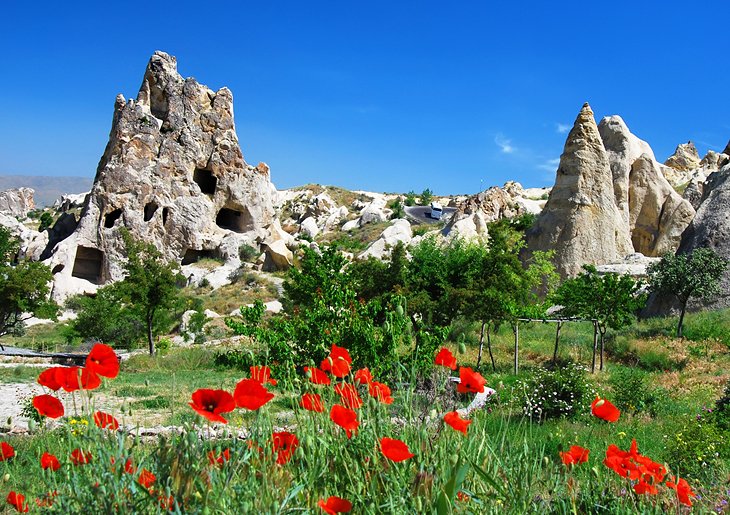
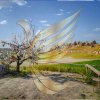
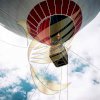
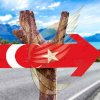

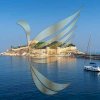
0 comments for this post